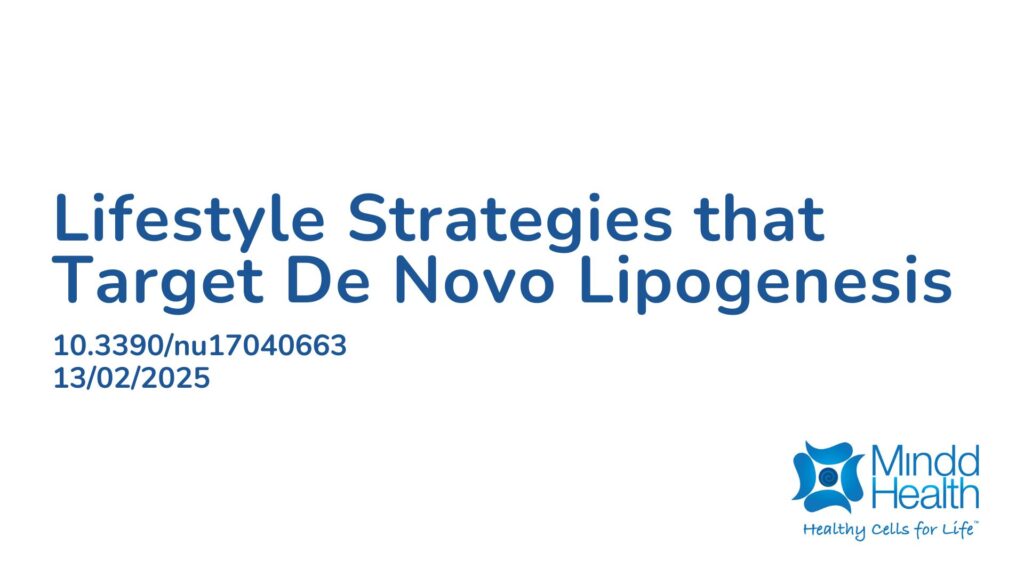Summary:
This narrative review explores the role of de novo lipogenesis (DNL), which is the process when the body converts excess carbohydrates into fatty acids, which are then stored as triglycerides. This occurs mainly in the liver, but also in fat tissue and other organs. While DNL in adipose tissue was once considered minor, recent studies show that up to 20% of certain fatty acids in human triglycerides come from DNL. DNL is normally low because dietary fat supplies most circulating lipids. However, high carbohydrate intake increases DNL activity. While this is useful for energy storage, overactivation can contribute to metabolic disorders, including fatty liver disease. DNL is also elevated in obesity, suggesting that reducing DNL could be a therapeutic target. Lifestyle strategies such as exercise, fasting, and ketogenic diets can help regulate DNL and improve metabolic health. Exercise increases muscle glucose uptake, lowers insulin, and promotes fat oxidation, reducing liver DNL. Endurance and resistance training also improve mitochondrial function, which helps prevent liver fat accumulation. Ketogenic diets reduce insulin and shift energy metabolism toward fat burning and ketone production, directly suppressing liver lipogenesis. Time-restricted eating can also inhibit DNL and enhancing lipid metabolism. Together, these interventions can improve lipid profiles, reduce liver fat, and prevent metabolic complications. By targeting both liver and adipose DNL, they help restore balance in systemic and local fat metabolism. While long-term effects require further study, current evidence suggests that integrating these strategies may offer meaningful benefits for managing metabolic disorders.
Abstract:
De novo lipogenesis (DNL) is a metabolic pathway that converts carbohydrates into fatty acids, primarily occurring in the liver and, to a lesser extent, in adipose tissue. While hepatic DNL is highly responsive to dietary carbohydrate intake and regulated by insulin via transcription factors like SREBP-1c, adipose DNL is more modest and less sensitive to dietary overfeeding. Dysregulated DNL contributes to metabolic disorders, including metabolic dysfunction-associated steatotic liver disease (MASLD). Lifestyle interventions, such as physical exercise, ketogenic diets, and time-restricted eating (TRE) offer promising strategies to regulate DNL and improve metabolic health. Physical exercise enhances glucose uptake in muscles, reduces insulin levels, and promotes lipid oxidation, thereby suppressing hepatic DNL. Endurance and resistance training also improve mitochondrial function, further mitigating hepatic triglyceride accumulation. Ketogenic diets shift energy metabolism toward fatty acid oxidation and ketogenesis, lower insulin, and directly downregulate lipogenic enzyme activity in the liver. TRE aligns feeding with circadian rhythms by optimizing AMP-activated protein kinase (AMPK) activation during fasting periods, which suppresses DNL and enhances lipid metabolism. The combined effects of these interventions demonstrate significant potential for improving lipid profiles, reducing hepatic triglycerides, and preventing lipotoxicity. By addressing the distinct roles of the liver and adipose DNL, these strategies target systemic and localized lipid metabolism dysregulation. Although further research is needed to fully understand their long-term impact, these findings highlight the transformative potential of integrating these approaches into clinical practice to manage metabolic disorders and their associated complications.
Article Publication Date: 13/02/2025
DOI: 10.3390/nu17040663



